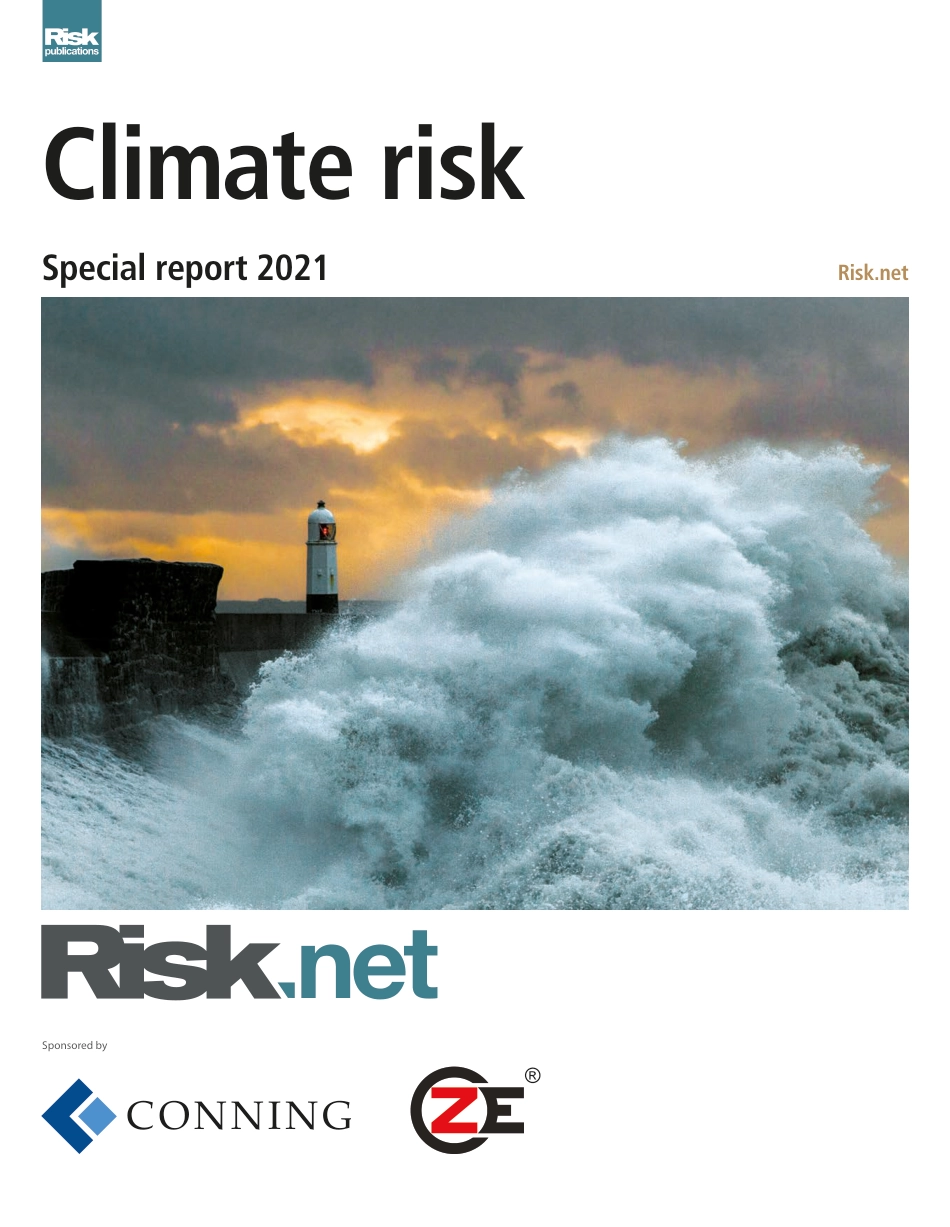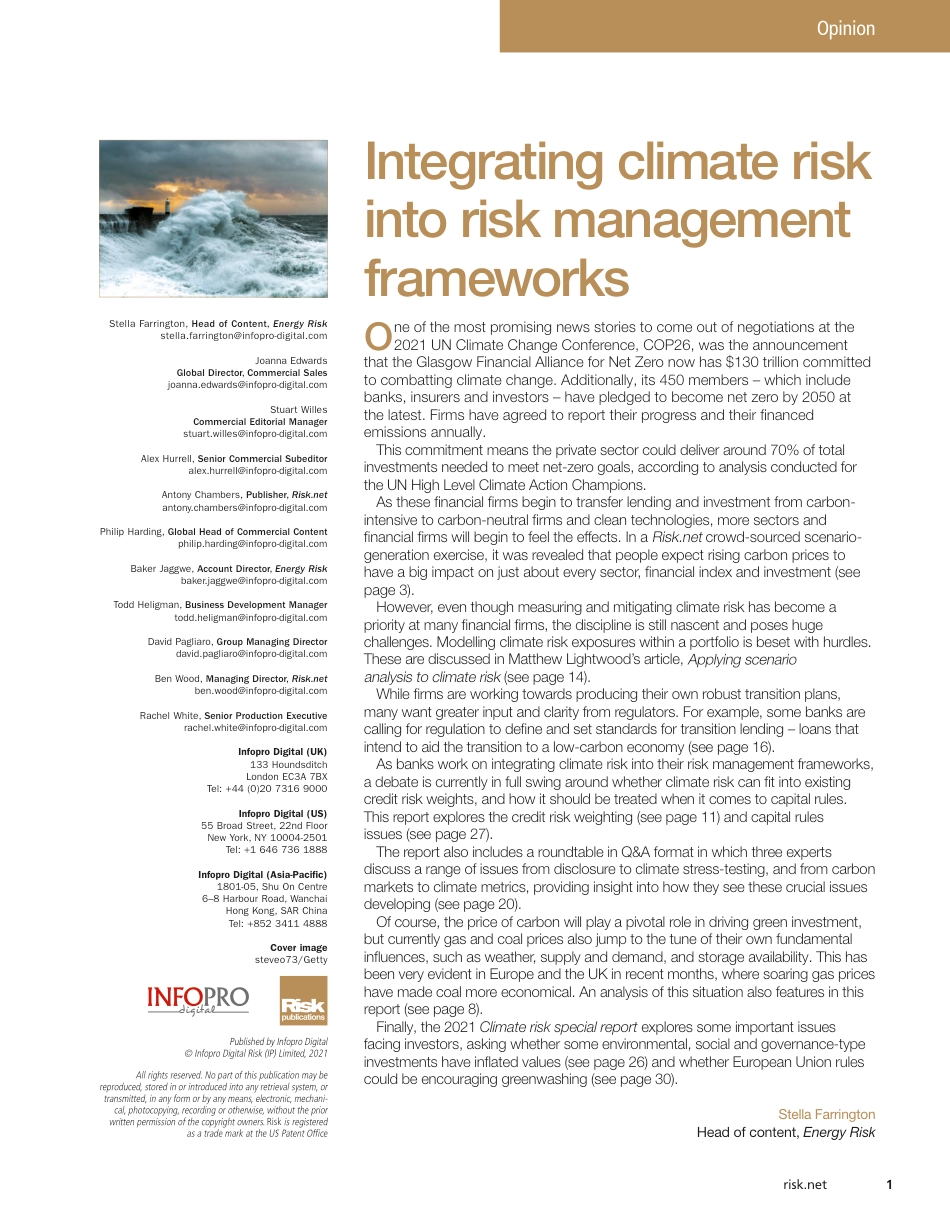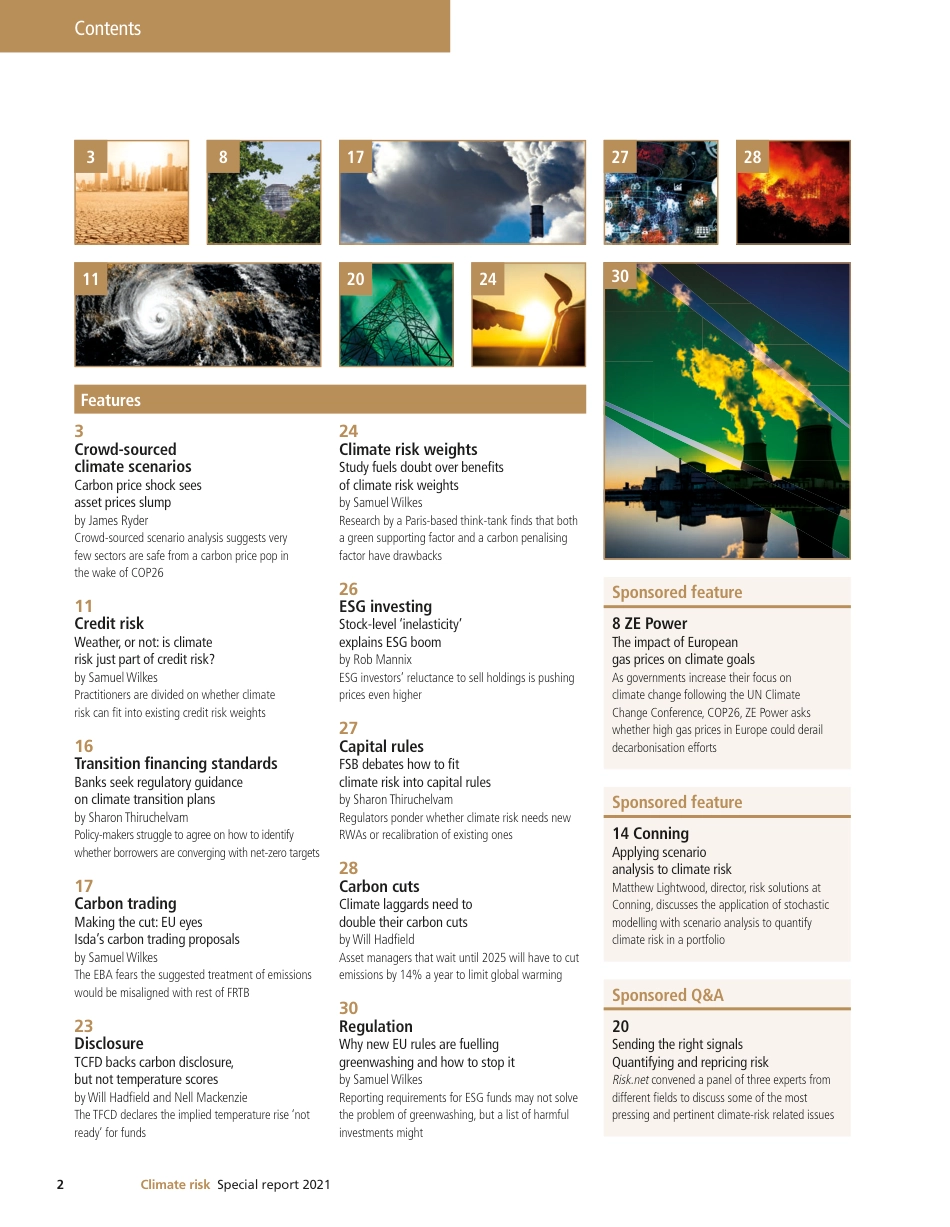Climate riskRisk.netSpecial report 2021Sponsored by1risk.netStella Farrington, Head of Content, Energy Riskstella.farrington@infopro-digital.comJoanna Edwards Global Director, Commercial Sales joanna.edwards@infopro-digital.comStuart Willes Commercial Editorial Managerstuart.willes@infopro-digital.comAlex Hurrell, Senior Commercial Subeditoralex.hurrell@infopro-digital.comAntony Chambers, Publisher, Risk.net antony.chambers@infopro-digital.com Philip Harding, Global Head of Commercial Content philip.harding@infopro-digital.com Baker Jaggwe, Account Director, Energy Riskbaker.jaggwe@infopro-digital.com Todd Heligman, Business Development Managertodd.heligman@infopro-digital.comDavid Pagliaro, Group Managing Director david.pagliaro@infopro-digital.comBen Wood, Managing Director, Risk.netben.wood@infopro-digital.comRachel White, Senior Production Executiverachel.white@infopro-digital.comInfopro Digital (UK)133 Houndsditch London EC3A 7BX Tel: +44 (0)20 7316 9000 Infopro Digital (US)55 Broad Street, 22nd FloorNew York, NY 10004-2501Tel: +1 646 736 1888 Infopro Digital (Asia-Pacific) 1801-05, Shu On Centre 6–8 Harbour Road, WanchaiHong Kong, SAR China Tel: +852 3411 4888Cover image steveo73/GettyPublished by Infopro Digital© Infopro Digital Risk (IP) Limited, 2021All rights reserved. No part of this publication may be reproduced, stored in or introduced into any retrieval system, or transmitted, in any form or by any means, electronic, mechani-cal, photocopying, recording or otherwise, without the prior written permission of the copyright owners. Risk is registered as a trade mark at the US Patent OfficeO ne of the most promising news stories to come out of negotiations at the 2021 UN Climate Change Conference, COP26, was the announcement that the Glasgow Financial Alliance...



